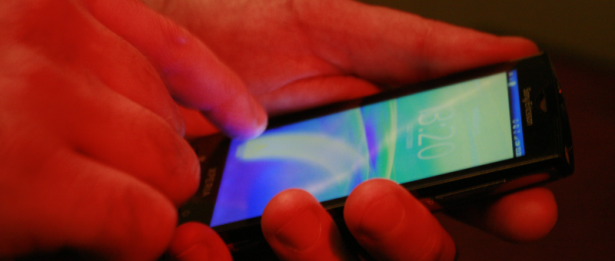Sony Ericsson, following considerable teasing, has finally unveiled its flagship handset for 2010 - the Xperia X10. It's an Android 1.6 device, complete with 4-inch capacitive touchscreen and a whole host of interface modifications that Sony Ericsson has created for the phone, and for a range of other handsets that'll be launched in 2010.
We got up close and personal with the handset, and spoke to Steve Walker, Sony Ericsson's head of portfolio planning, about how the release represents the company altering the way it does business. He told us that the company is now focusing on providing camera and multimedia functionality in the same phone - rather than splitting the product range.
The X10 represents that move, including both an 8-megapixel camera with LED flash and a 3.5mm headphone jack (very welcome on a Sony Ericsson handset) with a tonne of multimedia software - something that is a weakness of the default Android build.
The Android build has been heavily modified for the X10, but it's just the start of a whole range of both Android and Symbian handsets that'll be appearing from the company in the first half of 2010. Each will share a common interface design and set of applications and functionalities, starting with Timescape and Mediascape on the X10.
Timescape is a communications app, which aggregates email, Facebook, Twitter, IM, and SMS into one big lifestream that you can navigate through. Each "event" is represented by a tile, which you can tap to view in more detail, or long-press to get a preview of.
That tile has a button marked with an "oo" infinity symbol. Hitting that will take you to related content - which could be content from the person in question, or it could be web content related to whatever is on the tile. The list can be filtered by medium, and you can reply to individual messages within the application.
Mediascape is the other "signature" application. It's built around music, video and images and organises all three on your device. It incorporates players for all three, too, and can hook into various bits of online content. YouTube was named explicitly, but we'd expect Last.fm and perhaps Flickr to show up here too.
Items in Mediascape also have an infinity button and pressing this will again summon related content. For a band, that could be songs on your device, YouTube videos, or even other artists that are similar to whatever you're listening to. The overlaid controls of this section looked quite similar to the Zune's UI, though that's only a good thing.
Lastly, the image viewer in Mediascape supports facial recognition, meaning that you can tag up to five people in a photo and then the handset will attempt to identify those people in other images too - the more you tag, the more accurate it is. The feature can also hook in with your contacts list - you can tap a person in a photo to call them, for instance.
Although Sony Ericsson has deeply modded the UI, it's still Android at its heart. Any regular Android app can be installed and will look normal, and no sections of the default interface have been locked off and made inaccessible. Mostly they've just been re-skinned.
The handset packs a 1GHz Qualcomm Snapdragon processor, and has a big 4-inch capacitive FWVGA TFT touchscreen. It has an 8-megapixel camera, with LED flash, and comes with an 8GB microSD card in the box. It has HSDPA, Wi-Fi, GPS and Bluetooth, and connects to computer via micro- (not mini-) USB on the top.
It'll initially be launched in Q1 in "some markets", rolling out across the rest of the world (including Japan) over the first half of the year. It's not clear exactly which markets, but Walker hinted that Europe could be high on the list, discussing its "more flexible carriers" compared to the United States.
As for when in Q1, Walker said "it's not going to be two months, and it's not going to be five. You won't be seeing this on 31 March". Perhaps late February is a good estimate then, though handsets are often prone to delays. Although it ships with Android 1.6, Walker confirmed that Android 2.0 would be rolled out as soon as possible.
However, as this is only the first in a range of Android and Symbian handsets from Sony Ericsson that'll be packing similar user experiences, we wouldn't imagine that the company would be hanging around in launching this product. When we hear anything concrete about launch dates, or pricing and networks, we'll make sure that you know.
Update: There's now an Official Press Release on the handset.

